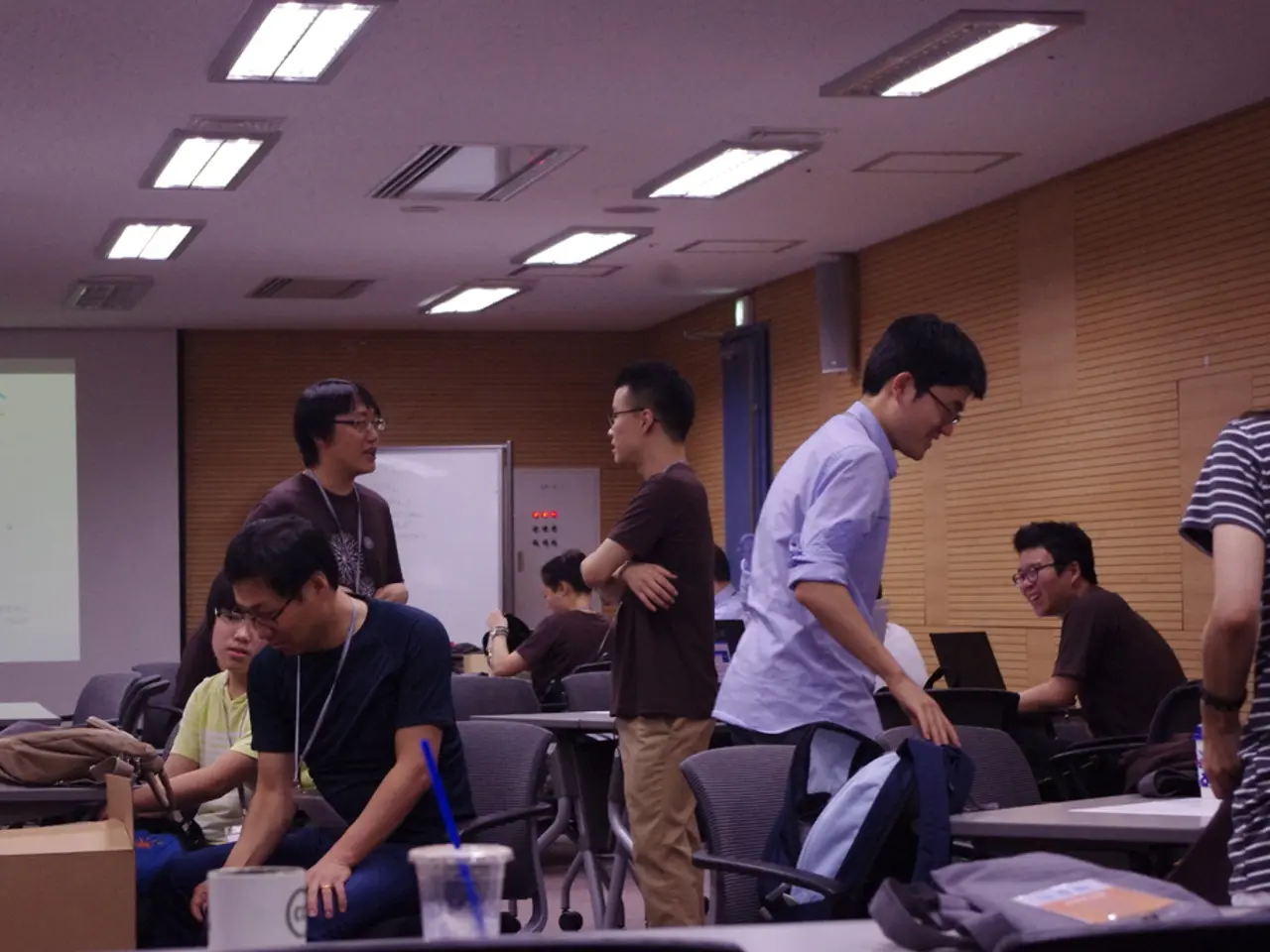MakerSpace's Cross-Subject Endeavors Boosting Culture and Education
Transforming Classrooms with Immersive Technology: A New Approach to Learning
The world of education is evolving, with the incorporation of immersive technology such as augmented reality (AR) and virtual reality (VR) becoming increasingly prevalent in schools. Tim Needles, an educator and author, is at the forefront of this shift, emphasizing the importance of interdisciplinary project-based learning (PBL) in makerspaces.
Needles suggests that the growing use of AI in classrooms underscores the need for project-based learning and creativity. This approach allows students to engage with technology in a meaningful way, rather than simply consuming it.
Virtual reality headsets, like Oculus, are being used as connective tools in the classroom. They provide students with the opportunity to experience virtual trips, such as to the International Space Station or the Anne Frank house, fostering a deeper understanding of subjects. AR, on the other hand, can be used for more practical applications, such as enhancing poster creation in classrooms or providing students with a unique way to interact with their surroundings.
Cross-curricular use of AR and VR is key to maximizing their positive impact on students. By blending subjects like science, technology, engineering, arts, and math (STEAM), these technologies can help students make connections between disciplines and foster creative thinking.
The new program, a micro course that students take as they enter high school, is designed to strengthen student understanding of digital literacy. Needles is currently testing this program through a company called Digital Responsibility.
Responsible and ethical use of digital tools and programs is a priority for educators like Needles. He also utilizes a variety of tools in the classroom, including Google, Classlink, Go Guardian, Adobe, Formative, Quizizz, EdPuzzle, and Discovery.
The integration of AR and VR in interdisciplinary PBL transforms classrooms into active, collaborative spaces. Students develop creativity through hands-on exploration, immersive storytelling, and real-world problem solving. This approach results in higher engagement and improved learning outcomes.
Moreover, VR's immersive nature helps sustain attention and can reduce barriers for underrepresented groups in STEM by providing equitable, engaging learning experiences. Immersive environments also promote interactive teamwork, enriching the social dimension of learning.
In conclusion, the use of AR and VR in education is revolutionizing the learning process. By fostering immersive, experiential learning, real-world simulations, interdisciplinary connections, enhanced social interaction and collaboration, increased motivation, and inclusivity, these technologies are transforming classrooms into spaces where students can develop creativity and achieve better learning outcomes.
[1] EduTech Magazine [2] TechCrunch [3] Forbes [4] The Guardian [5] EdTech Focus on K-12
- Tim Needles, an author and educator, advocates for project-based learning (PBL) in schools as a response to the growing use of artificial intelligence (AI) in classrooms.
- Virtual reality (VR) headsets, like Oculus, are used in classrooms as tools for immersive experiences, enabling students to virtually tour places such as the International Space Station or the Anne Frank house.
- Augmented reality (AR) is useful for practical applications in classrooms, such as enhancing poster creation or providing students with an interactive learning experience.
- Interdisciplinary use of AR and VR can make a significant positive impact on students by facilitating connections between subjects and promoting creative thinking.
- A new program designed for high school students, developed by Digital Responsibility, aims to strengthen understanding of digital literacy.
- The integration of AR and VR into interdisciplinary project-based learning (PBL) transforms classrooms into collaborative spaces that promote creativity, engagement, and inclusivity in education.




